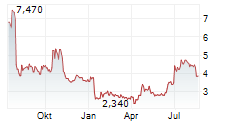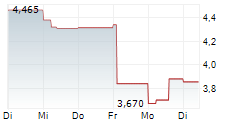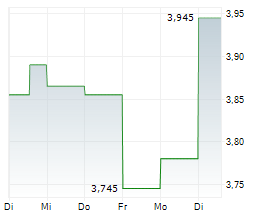- DASYNOC (Xspray's low dose, amorphous, non-crystalline, dasatinib) avoids interactions with proton pump inhibitors (PPIs), making it potentially the first and only dasatinib to provide patients the full therapeutic benefit of their treatment
- SPRYCEL (crystalline dasatinib) uptake, when used with omeprazole, provides only 12% of the intended SPRYCEL dosage in the absence of omeprazole
- Nearly half of CML patients treated with a tyrosine kinase inhibitors (TKIs), like dasatinib, are also treated with PPIs such as omeprazole1
Xspray Pharma AB (Stockholm/Nasdaq: XSPRAY) a biotechnology company developing improved TKIs for cancer treatment, through its proprietary HyNap technology, today announced the results from drug interaction studies demonstrating that DASYNOC's (DASYNOC CO-PPI Study) uptake into blood following oral dosing is not altered by the concomitant administration of omeprazole, a commonly prescribed PPI, while a significant reduction in the uptake of SPRYCEL (SPRYCEL CO-PPI Study) was observed with the use of omeprazole.
Xspray has demonstrated that in the DASYNOC CO-PPI Study, DASYNOC's uptake into blood was not affected 10 hours after taking omeprazole (107 of intended AUC0-24h and 86% of intended Cmax). However, in the SPRYCEL CO-PPI Study, the uptake of SPRYCEL was significantly reduced 10 hours after taking omeprazole (only 12% of the intended AUC0-24h and 4% of the intended Cmax). Previous studies supporting the approval of SPRYCEL demonstrated that administration of a single 100 mg dose of SPRYCEL, 22 hours following a 40 mg dose of omeprazole, reduced the mean AUC of dasatinib to 57% and the mean Cmax to 58% of the intended values without PPI2
"Patients in need of both SPRYCEL and PPI therapy, and their treating physicians, must be aware that PPIs reduce the uptake of SPRYCEL significantly more than previously known which clearly introduces the risk of suboptimal treatment outcomes," said Per Anderson, chief executive officer of Xspray. "We recently published that CML patients, concomitantly treated with TKIs and PPIs, are at a statistically significant 3.5-fold increased risk of death. The encouraging results of the CO-PPI study highlight DASYNOC's significant potential to improve CML treatment. Currently, no alternative dasatinib product is available that avoids the PPI interaction. We look forward to change that by making DASYNOC available to doctors and patients next year."
Despite labeled avoidance of coadministration of SPRYCEL with PPIs2, PPIs are used concomitantly in nearly half of all CML patients taking TKIs.1 The SPRYCEL CO-PPI Study data show that subjects received only 12% of the intended dasatinib dosage. This may potentially increase their risk of disease progression and death1. SPRYCEL was approved in 2006 by the FDA and is the market leading branded product that revolutionized the treatment of CML. However, the crystalline formulation of dasatinib in SPRYCEL results in a low, pH-sensitive, and highly variable intestinal absorption that may jeopardize the optimal and anticipated therapeutic response.3-6 In contrast, DASYNOC's amorphous, non-crystalline, formulation results in higher solubility, improved dissolution and pH independent bioavailability allowing patients to receive the full benefits of dasatinib therapy.7
About the CO-PPI Studies
The DASYNOC CO-PPI Study investigated the blood uptake of 90 mg of oral DASYNOC when administered with concomitant 40 mg omeprazole in sixteen healthy volunteers. AUC0-24h and Cmax of DASYNOC were recorded following dosing of DASYNOC alone on Day 1. On days 2 through 5, participants received 40 mg of omeprazole once daily. On day 6, 10 hours after the last omeprazole dose, DASYNOC was again administered and AUC0-24h and Cmax were recorded. Day 1 served as the reference value and day 6 served as the concomitant experimental outcome1
The SPRYCEL CO-PPI Study, of similar design to the DASYNOC CO-PPI Study, investigated SPRYCEL blood uptake when administered with concomitant omeprazole, was investigated in healthy volunteers. On day 1, participants were administered 100 mg of SPRYCEL and the relative bioavailability (AUC0-24h and Cmax) of dasatinib was determined as a reference value. On days 2 through 5, participants were given 40 mg of omeprazole once daily. On day 6, 10 hours after the last omeprazole dose, 100 mg of SPRYCEL was administered and the AUC0-24h and Cmax of dasatinib was measured and compared to the reference value.
About Xspray and HyNap Technology
Xspray Pharma AB is a biotechnology company developing improved TKIs for cancer treatment, through its proprietary HyNap technology. HyNap is a patented pharmaceutical technology platform designed to create amorphous, non-crystalline forms of protein kinase inhibitors to improve their pharmaceutical shortcomings and allow for the absorption and bioavailability necessary to unleash their full clinical potential in the treatment of cancer and other diseases, following oral therapy. Xspray's product portfolio consists of a number of similar improved product candidates for various cancers.
About DASYNOC
DASYNOC (amorphous, non-crystalline dasatinib) is Xspray's most advanced product candidate developed using the HyNap technology. The US Food and Drug Administration (FDA) has granted DASYNOC orphan drug status for the treatment of CML. The FDA is currently reviewing DASYNOC for market approval under the so-called regulatory 505(b)(2) NDA process, and the expected launch date for DASYNOC in the US is September 1, 2024. Net sales of the reference product, SPRYCEL, are expected to reach 1.8 billion USD in 2023.
Forward Looking Statement
This press release contains forward-looking statements. Forward-looking statements reflect management's current knowledge, assumptions, judgment and expectations regarding future performance or events. Although Xspray's management believes that the expectations reflected in such statements are reasonable, they give no assurance that such expectations will prove to be correct and you should be aware that actual events or results may differ materially from those contained in the forward-looking statements. Words such as "will," "expect," "intend," "plan," "potential," "possible," "goals," "accelerate," "continue," and similar expressions identify forward-looking statements, including, without limitation, statements regarding Xspray's beliefs relating to the technologies in Xspray's current pipeline. These forward-looking statements are subject to a number of risks and uncertainties including, but not limited to, the risks inherent in Xspray's lack of profitability and need for additional capital to grow Xspray's business; Xspray's dependence on partners to further the development of Xspray's product candidates; the uncertainties inherent in the development, attainment of the requisite regulatory approvals or authorization for patient use for the product candidate and launch of any new pharmaceutical product; the outcome of pending or future litigation.
All forward-looking statements are expressly qualified in their entirety by this cautionary notice. You should not place undue reliance on any forward-looking statements, which speak only as of the date of this release. Xspray undertakes no obligation to revise or update any forward-looking statements made in this press release to reflect events or circumstances after the date hereof or to reflect new information or the occurrence of unanticipated events, except as required by law.
References
1. Larfors, G. et al. Despite warnings, co-medication with proton pump inhibitors and dasatinib is common in chronic myeloid leukemia, but XS004, a novel oral dasatinib formulation, provides reduced pH-dependence, minimizing undesirable drug-drug interactions. Eur J Haematol 111, 644-654 (2023).
2. Bristol Myers Squibb. SRYCEL Prescribing Information. February 2023. Accessed October 31, 2023. https://packageinserts.bms.com/pi/pi_sprycel.pdf
3. Luo, F. R. et al. Dasatinib (BMS-354825) Pharmacokinetics and Pharmacodynamic Biomarkers in Animal Models Predict Optimal Clinical Exposure. doi:10.1158/1078-0432.CCR-06-1112.
4. Budha, N. R. et al. Drug Absorption Interactions Between Oral Targeted Anticancer Agents and PPIs: Is pH-Dependent Solubility the Achilles Heel of Targeted Therapy? Clin Pharmacol Ther 92, 203-213 (2012).
5. Tsume, Y., Takeuchi, S., Matsui, K., Amidon, G. E. Amidon, G. L. In vitro dissolution methodology, mini-Gastrointestinal Simulator (mGIS), predicts better in vivo dissolution of a weak base drug, dasatinib. European Journal of Pharmaceutical Sciences 76, 203-212 (2015).
6. Verheijen, R. B. et al. Practical Recommendations for Therapeutic Drug Monitoring of Kinase Inhibitors in Oncology. Clin Pharmacol Ther 102, 765-776 (2017).
7. Jermain, S. V, Brough, C. Williams, R. O. Amorphous solid dispersions and nanocrystal technologies for poorly water-soluble drug delivery An update. Int J Pharm 535, 379-392 (2018).
View source version on businesswire.com: https://www.businesswire.com/news/home/20231108451778/en/
Contacts:
Xspray Media
Charlotte Wray
RXMD
cwray@rxmedyn.com
646-599-8601
Xspray Investors
Kerstin Hasselgren
CFO Xspray
kerstin.hasselgren@xspray.com
46 70 311 16 83




